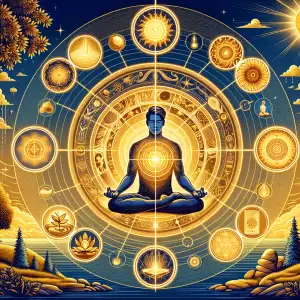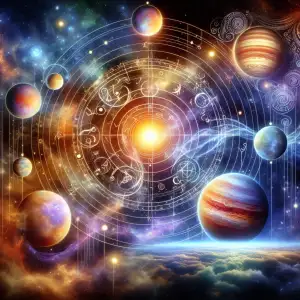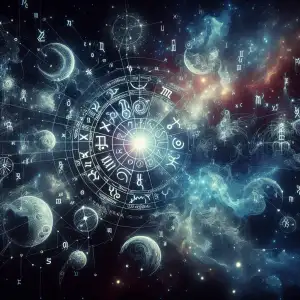Unlock Your Inner Wisdom: Exploring Spiritual Archetypes

What is a Spiritual Archetype?
A spiritual archetype is like a universal blueprint or symbol that exists in the collective unconscious. It represents fundamental human experiences, motivations, or patterns of behavior that transcend time and culture. Think of it as a common thread woven through the tapestry of human spirituality, connecting us all on a deeper level.
These archetypes often appear as recurring characters or motifs in mythology, religion, and literature. They embody universal energies and can be thought of as different aspects of the Self. For example, the Wise Old Man archetype represents wisdom, guidance, and knowledge, while the Great Mother embodies nurturing, fertility, and unconditional love.
Understanding spiritual archetypes can provide valuable insights into our own psyche and spiritual journey. By recognizing these patterns within ourselves and the world around us, we can gain a deeper understanding of our motivations, strengths, and challenges. This awareness can empower us to live more authentically and connect with a sense of purpose and meaning in our lives.
Common Archetypes Across Cultures
Spiritual archetypes, universal symbols, or characters transcend cultural boundaries, resonating deeply with the human psyche across time and tradition. These archetypes embody fundamental human experiences, aspirations, and the search for meaning.
The Hero, found in myths and stories globally, represents courage, resilience, and the struggle against adversity for a greater good. From Hercules to Buddha, the Hero's journey of facing trials and achieving victory reflects our own inner battles and potential for growth.
The Wise Old Man or Woman, often depicted as a sage, guru, or shaman, embodies wisdom, knowledge, and spiritual guidance. This archetype, from Merlin to indigenous healers, connects us to a source of higher understanding and offers guidance on life's path.
The Great Mother, a universal symbol of nurturing, fertility, and unconditional love, is found in various forms, such as Mother Earth, goddesses like Isis or Gaia, and even in compassionate human figures. This archetype represents the feminine principle of creation, nourishment, and emotional support.
The Trickster, often mischievous and unpredictable, disrupts the status quo, challenges norms, and reminds us not to take life too seriously. Figures like Loki in Norse mythology or the Native American Coyote embody this archetype, reminding us of the importance of humor, adaptability, and seeing different perspectives.
The Shadow represents the hidden or repressed aspects of our personality. Often depicted as a dark figure or antagonist, it reflects the parts of ourselves we deem unacceptable or fear. Carl Jung, a renowned psychologist, saw the Shadow not as inherently evil but as an unintegrated part of the self that, once acknowledged and understood, can lead to wholeness and personal growth.
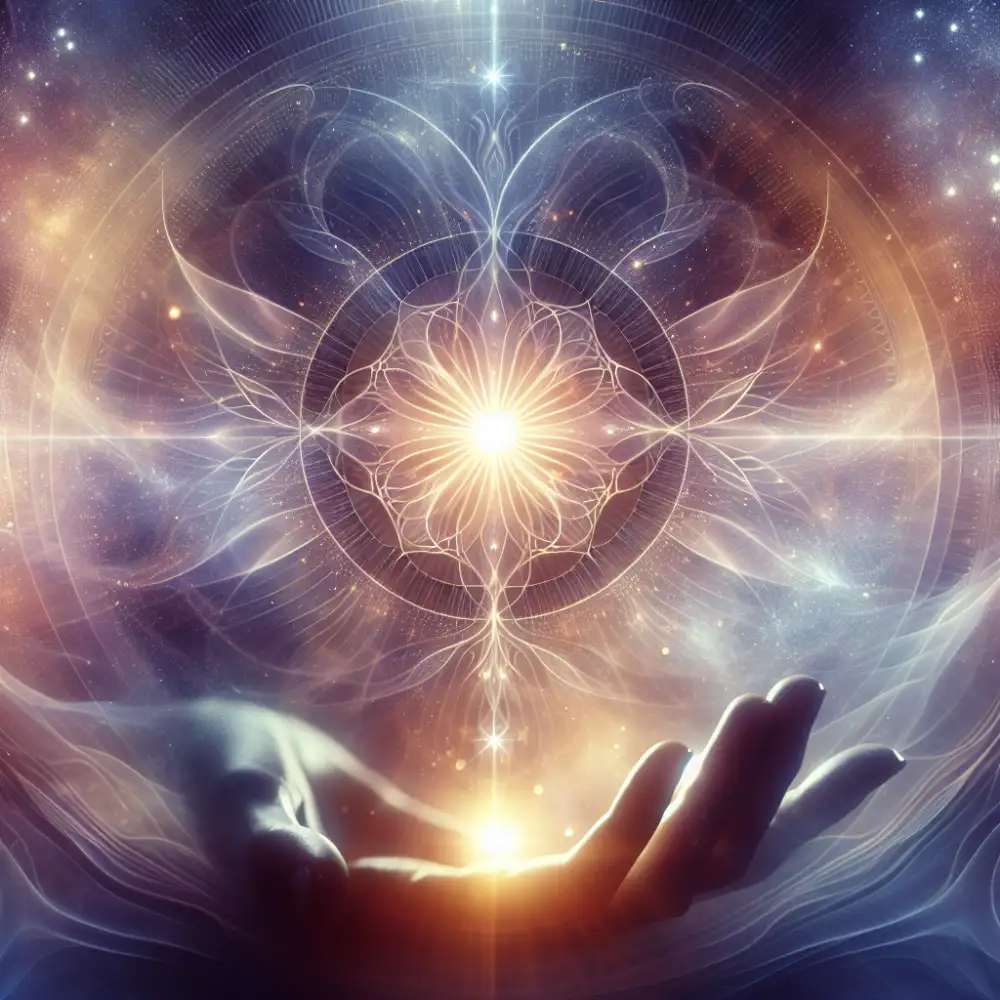
These archetypes are not merely characters in stories but reflect deep-seated patterns within the human psyche. Recognizing these archetypes in ourselves, others, and the world around us can provide insights into our motivations, behaviors, and the collective human experience. By understanding these universal symbols, we can navigate our inner and outer worlds with greater awareness, compassion, and purpose.
The Hero
The Hero is a powerful archetype that appears in myths, stories, and religions across cultures and throughout history. The Hero embodies courage, strength, and the willingness to confront danger and darkness, often for the greater good. This archetype resonates deeply within us because it reflects our own potential for growth, transformation, and overcoming challenges. The Hero's journey, often fraught with trials and tribulations, mirrors our own inner struggles and aspirations.
The Hero's journey typically follows a pattern known as the "monomyth," popularized by mythologist Joseph Campbell. This journey involves a departure from the ordinary world, a descent into the unknown, a series of tests and trials, a triumphant return with newfound wisdom or a boon to share. Think of figures like Buddha, who left his comfortable life to confront suffering and attain enlightenment, or Jesus, who faced persecution and death to offer humanity a path to salvation. These figures, though rooted in specific traditions, embody universal aspects of the Hero archetype.
The Hero's journey is not just about external battles and quests. It is fundamentally about confronting our inner demons, our fears, and limitations. The dragon the Hero slays can represent our own ego, our negative patterns, or the darkness that resides within us all. The Hero's journey invites us to embark on our own quest for self-discovery, to face our fears, and to strive for wholeness and authenticity. The Hero reminds us that we all possess the potential for greatness, courage, and compassion.
The Sage
The Sage archetype embodies wisdom, knowledge, and the pursuit of truth. Represented across cultures, this figure seeks understanding and enlightenment. Think of wise old men and women, gurus, mentors, teachers, and advisors. The Sage archetype transcends specific religions or beliefs. They are not necessarily old in years but possess wisdom beyond their age.
| Spiritual Archetype | Culture/Religion | Symbolism | Characteristics |
|---|---|---|---|
| The Hero | Universal | Sword, Shield, Journey | Courageous, Selfless, Overcoming Obstacles |
| The Wise Old Man/Woman | Universal | Staff, Book, Nature | Knowledgeable, Guiding, Experienced |
| The Great Mother | Universal | Earth, Water, Moon | Nurturing, Life-Giving, Protective |
| The Trickster | Universal | Masks, Shadows, Illusions | Mischievous, Rule-Breaking, Transformative |
The Sage seeks solitude and reflection, often distancing themselves from worldly distractions to delve into deeper meaning. They are objective, using their intellect and intuition to guide others. However, they are not emotionless. They experience the world fully but with a sense of detachment that allows for clarity and understanding.
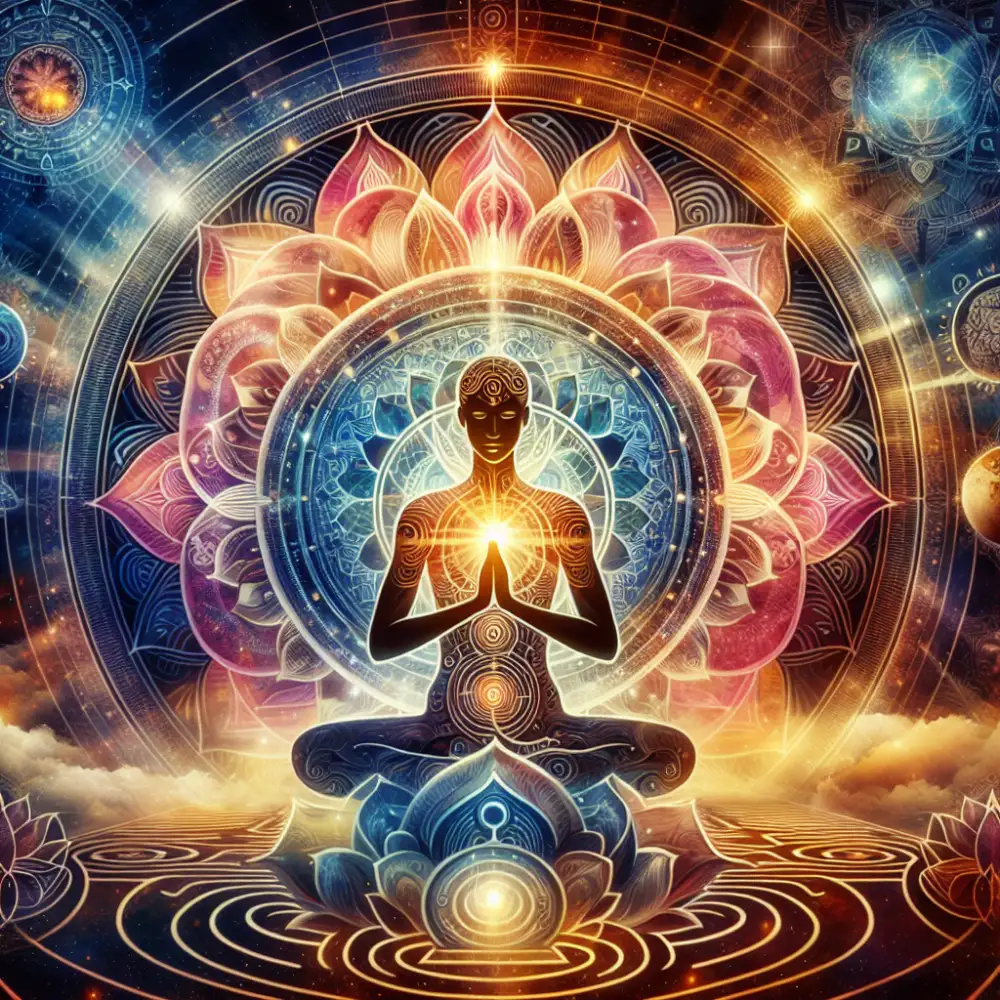
The Sage archetype reminds us of the importance of knowledge, self-reflection, and seeking truth. They teach us to question, learn, and grow. The Sage guides us toward inner wisdom and encourages us to become mentors and guides for others.
The Innocent
The Innocent, a pure soul navigating a complex world. This archetype embodies the virtues of purity, simplicity, and unwavering faith. Think of a newborn child, eyes wide with wonder, untouched by cynicism or malice. That's the essence of the Innocent. This archetype yearns for paradise, a world free from pain and suffering. They see the good in everyone and everything, often overlooking red flags in their optimistic pursuit of joy.
The Innocent often appears in spiritual traditions across the globe. In Christianity, we encounter Jesus, who, in his childlike faith, embodies innocence. The Hindu deity Krishna, known for his playful nature and pure heart, also reflects this archetype. These figures remind us of the inherent goodness within us all, urging us to approach life with an open heart and a sense of wonder.
However, the Innocent's journey is not without its challenges. The world can be a harsh place, and their naivete can make them vulnerable to manipulation and disappointment. Yet, their spirit remains uncorrupted. Even when faced with adversity, they hold onto their faith, reminding us of the power of hope and optimism.
The Innocent's journey is a call to action for us all. It's a reminder to reconnect with our inner child, to embrace simplicity, and to approach life with a sense of wonder. While maintaining a healthy dose of realism, we can all benefit from incorporating a touch of the Innocent's spirit into our lives.
The Creator
The Creator is a fundamental archetype found in cultures and spiritual traditions worldwide. Representing the ultimate source of all that exists, the Creator embodies the principles of creation, manifestation, and the divine spark within all beings. This archetype is not necessarily depicted as a deity in a specific religion but rather as a universal principle that transcends individual beliefs.
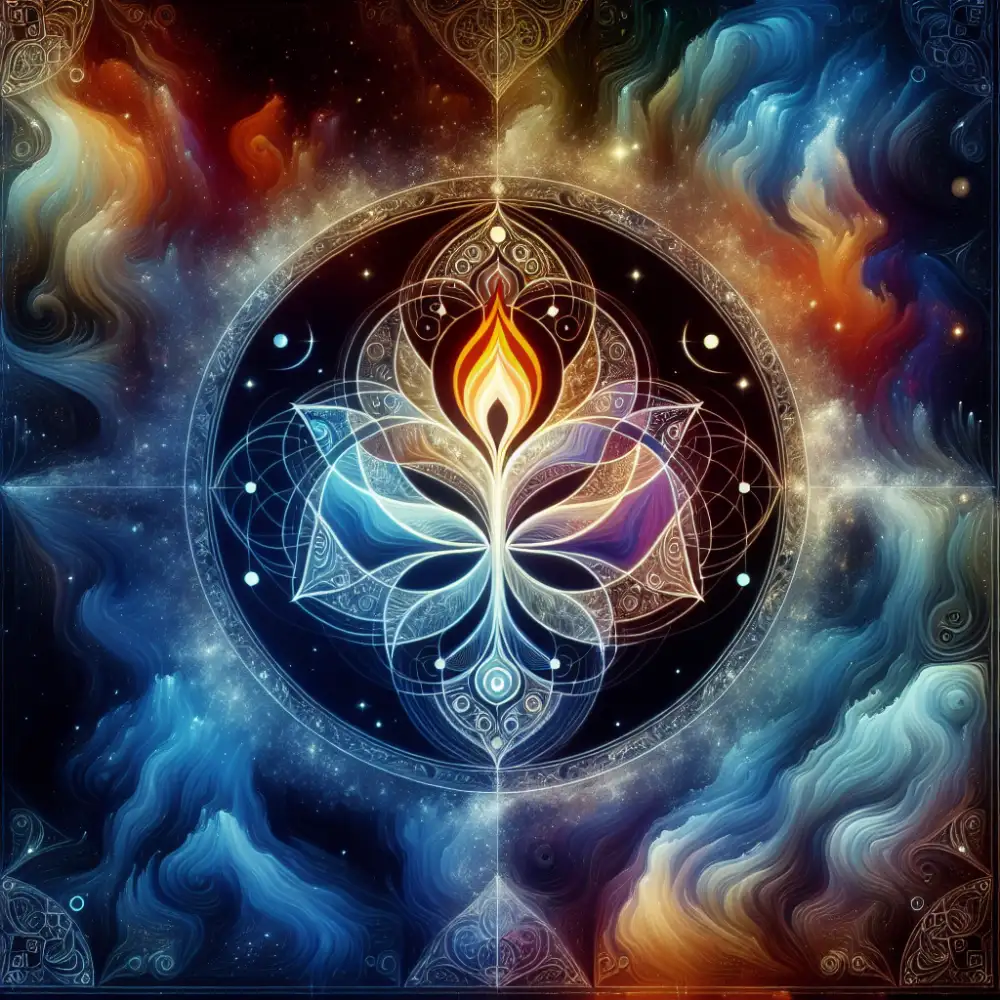

The Creator is often associated with qualities such as infinite power, wisdom, and benevolence. They are seen as the architect of the cosmos, the giver of life, and the sustainer of all things. In many traditions, the act of creation is not seen as a one-time event but as an ongoing process, with the Creator constantly breathing life into the universe.
The concept of the Creator can provide a sense of meaning and purpose in life. By recognizing a divine intelligence behind the order and beauty of the natural world, individuals may find solace and inspiration. The archetype can also inspire creativity and innovation, reminding us that we, too, possess a spark of the divine and can participate in the ongoing act of creation through our thoughts, actions, and artistic expressions.
The Creator archetype serves as a reminder of the interconnectedness of all things. If all beings emanate from the same source, then there is a fundamental unity that binds us together. This understanding can foster feelings of compassion, empathy, and a sense of responsibility for the well-being of others and the planet.
The Ruler
The Ruler is an archetype of control, responsibility, and authority. It symbolizes the power we have over our own lives and the need to use that power wisely. The Ruler is often associated with figures of authority, such as kings, queens, presidents, and CEOs. They can also represent the internal authority we develop as we mature.
The Ruler archetype reminds us that we are responsible for our own choices and actions. We have the power to create our own reality. When this archetype is out of balance, it can manifest as a need for control, a fear of chaos, or a tendency to be bossy and domineering. On the other hand, a healthy Ruler archetype is confident, decisive, and fair. They use their power to create order and harmony in the world.
In many spiritual traditions, the Ruler is seen as a symbol of the divine masculine. This is because the Ruler embodies qualities such as strength, courage, and leadership. The Ruler is often depicted as a father figure who provides guidance and protection. The Ruler archetype invites us to step into our own power and to use it for the greater good. It is a reminder that we are all capable of creating positive change in the world.
The Caregiver
The Caregiver archetype embodies the universal instinct to nurture and protect. Found across cultures and mythologies, this figure represents compassion, empathy, and selfless devotion to others. Think of archetypal figures like Mother Mary, Kwan Yin, or mythological characters like Demeter, whose love for Persephone knew no bounds. The Caregiver reminds us of the profound importance of empathy and the interconnectedness of all beings. They teach us the power of unconditional love, reminding us that true strength lies in vulnerability and compassion. This archetype calls us to cultivate these qualities within ourselves, to offer care and support to those around us, and to approach the world with an open and loving heart.
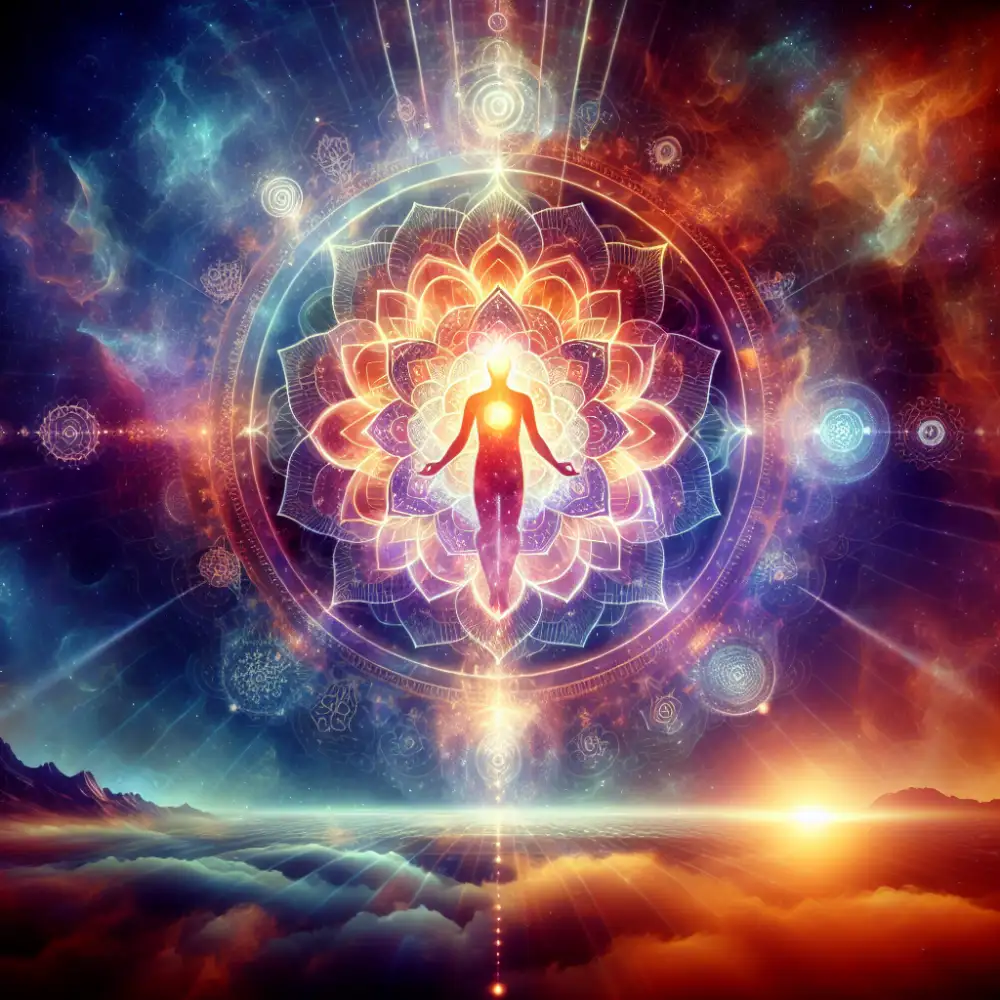
However, the Caregiver archetype also has its shadow side. Without proper self-care, the Caregiver can become overly sacrificing, neglecting their own needs to the point of exhaustion and resentment. It’s crucial to remember that caring for others starts with caring for oneself. By recognizing and honoring our own needs, we can better serve others from a place of wholeness and authenticity. The Caregiver archetype ultimately invites us to find a balance between giving and receiving, to cultivate compassion without losing ourselves in the process.
The Everyman
The Everyman is a relatable figure representing the ordinary person, not extraordinary in any way. He is average in intelligence, morality, and experience. This archetype appears in stories, myths, and spiritual traditions across cultures. He is the universal symbol of humanity, reflecting our shared experiences, struggles, and aspirations.
The Everyman reminds us that we are not alone in our journey. He faces challenges, makes mistakes, and learns from them, just like everyone else. His ordinariness highlights the extraordinary potential that lies within each of us. He reminds us that greatness is not reserved for a select few but can be achieved by anyone willing to embrace their humanity.
In literature, characters like Shakespeare's Hamlet and Cervantes' Don Quixote embody the Everyman archetype. They grapple with universal themes of love, loss, purpose, and morality. Their struggles resonate with readers because they reflect our own.
In spiritual traditions, the Everyman often embarks on a journey of self-discovery. He may face trials and temptations, but ultimately, he seeks enlightenment and connection with something greater than himself. This journey is a metaphor for our own spiritual growth, reminding us that the path to enlightenment is open to all.
The Everyman is a powerful reminder that our shared humanity connects us. He teaches us that our struggles and triumphs are not unique but part of the larger human experience. By embracing our ordinariness, we can tap into the extraordinary potential that lies within us all.
The Jester
The Jester, often clad in vibrant colors and adorned with bells, might appear frivolous at first glance. However, beneath the playful exterior lies a profound spiritual archetype. Across cultures and mythologies, the Jester, Fool, or Trickster embodies a unique spiritual energy. Unbound by societal norms and expectations, the Jester dances on the fringes of accepted behavior, mirroring the absurdity of the human condition back to us. Their laughter, often jarring and unexpected, disrupts our carefully constructed realities, forcing us to question our assumptions and confront uncomfortable truths.
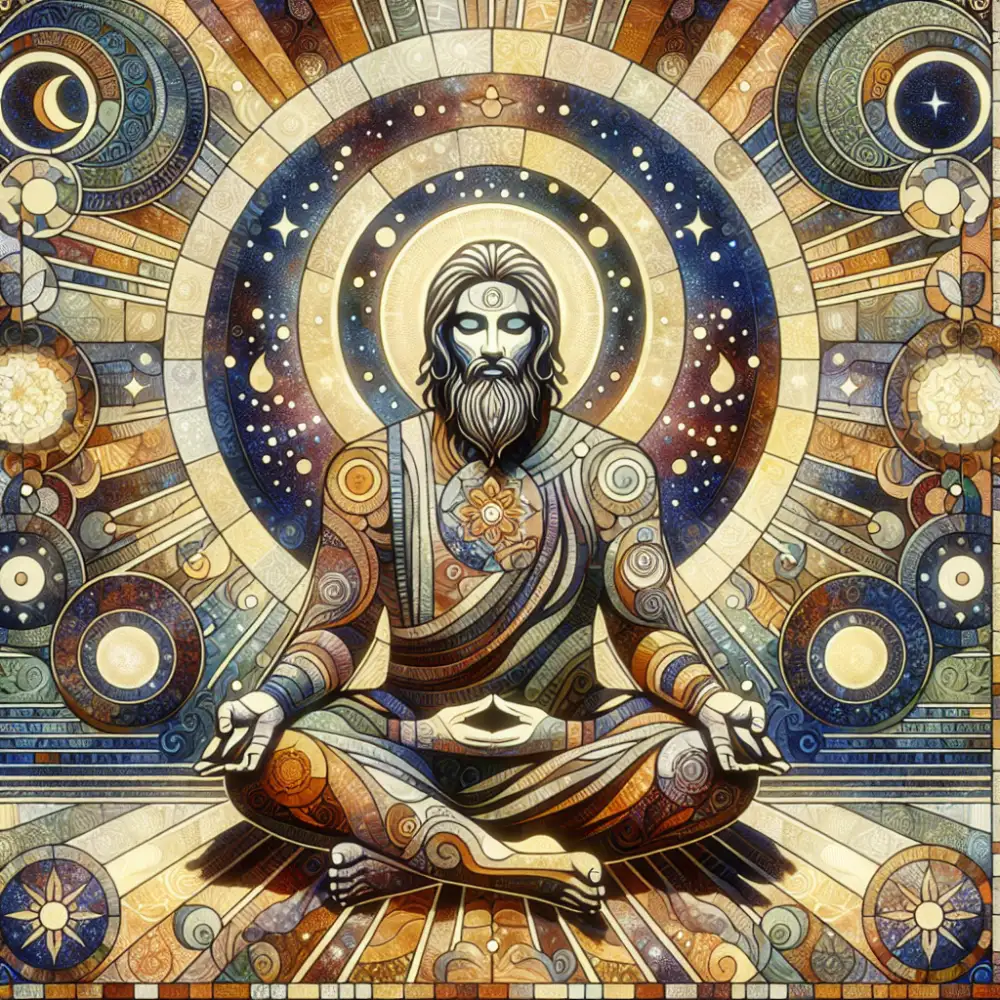
The Jester is a master of paradox. They are both wise and foolish, insightful and absurd, holding a mirror to our own dualities. Their seemingly nonsensical pronouncements often contain hidden wisdom, challenging us to look beyond the surface and find deeper meaning. In many spiritual traditions, the Jester represents the shadow self, the part of us that we repress or deny. By embracing the Jester within, we acknowledge the totality of our being, integrating our shadows and moving towards wholeness.
The Jester's role is not to provide answers but to provoke questions. They remind us not to take ourselves too seriously, to find joy in the midst of suffering, and to embrace the unpredictable dance of life. Ultimately, the Jester is a catalyst for spiritual awakening, urging us to laugh at our own folly, question our perceived realities, and embrace the transformative power of chaos.
Shadow Archetypes
Shadow archetypes are parts of our personality that we repress or deny. They are often negative traits that we are ashamed of, such as anger, greed, or lust. However, they can also be positive qualities that we have disowned, such as creativity, passion, or power.
Carl Jung, a Swiss psychiatrist, believed that the shadow is an archetype, a universal, unconscious pattern of energy that is present in all humans. He believed that the shadow arises from the collective unconscious, which is a storehouse of all human experience.
The shadow is often projected onto others. When we see someone who embodies a trait that we deny in ourselves, we may react with anger, fear, or disgust. This is because the shadow is a part of us, and we are afraid to face it.
However, the shadow is not inherently bad. It is simply a part of us that needs to be acknowledged and integrated. When we can accept our shadow, we can become more whole and complete individuals.
There are many different shadow archetypes. Some of the most common include:
The Victim: This archetype feels powerless and helpless. They may blame others for their problems and feel sorry for themselves.
The Addict: This archetype is addicted to substances or behaviors that help them avoid their pain.
The Saboteur: This archetype self-sabotages their own success. They may have a fear of failure or success.
The Critic: This archetype is highly critical of themselves and others.
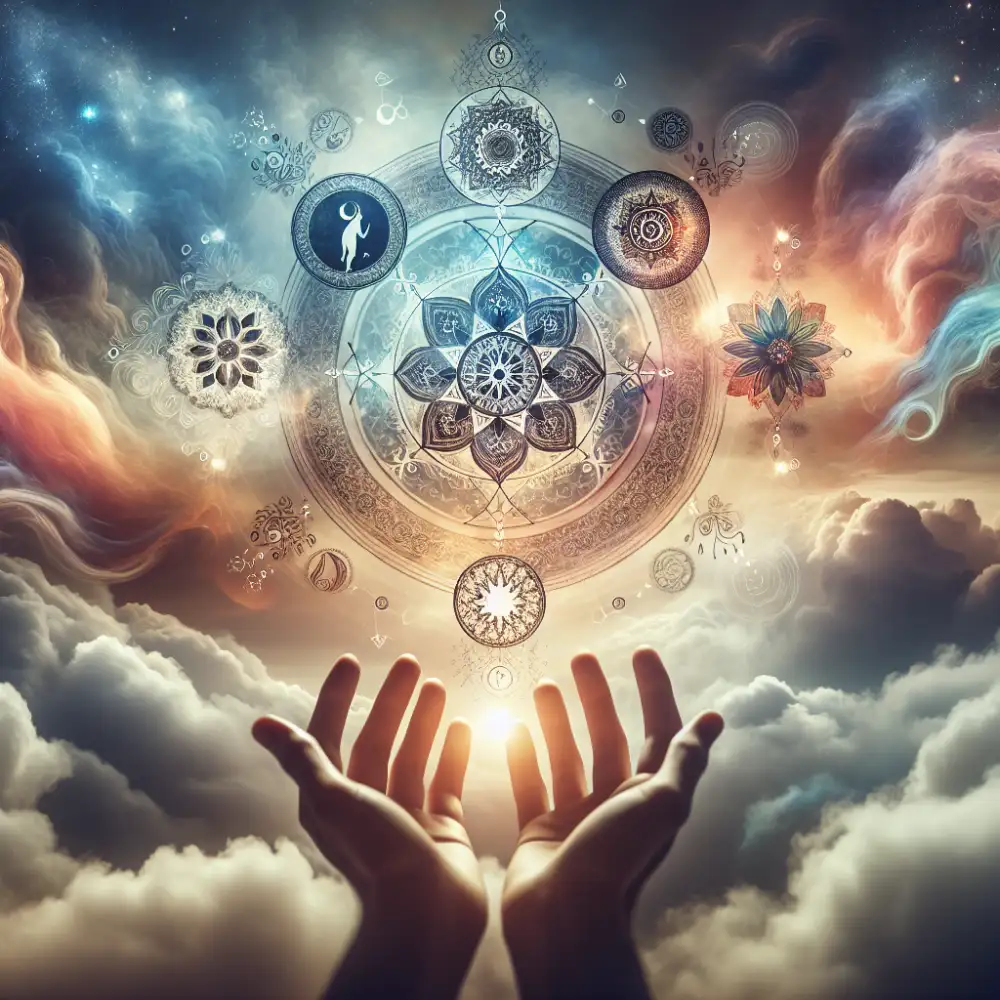
The Perfectionist: This archetype strives for perfection in all areas of their life.
If you are struggling with a shadow archetype, there are many things you can do to heal. You can start by becoming aware of your shadow and the ways in which it is impacting your life. You can also seek professional help from a therapist or counselor.
Integrating your shadow is a lifelong journey. However, it is a journey that is worth taking. When you can embrace your shadow, you can become a more authentic and whole individual.
Archetypes and Personal Growth
Archetypes, those universal, mythic patterns of energy, offer profound insights into our personal growth journeys. They act as mirrors, reflecting aspects of ourselves, both light and shadow. One such powerful archetype is the Wise Old Man/Woman, embodying wisdom, knowledge, and spiritual authority. This figure, appearing across cultures as shamans, gurus, or simply wise elders, represents the potential for inner wisdom and guidance we all possess.
Connecting with this archetype can be transformative. It encourages us to access our intuition, seek deeper meaning, and trust the wisdom gained through experience. This might involve exploring spiritual practices like meditation or engaging with mentors and teachers who embody these qualities. As we integrate this archetype, we step into our power, making conscious choices guided by inner knowing rather than external pressures. This journey inward is not always easy. It requires confronting our shadows, those aspects we often repress or deny. Yet, by acknowledging and integrating these parts, we move towards wholeness and authenticity.
The Wise Old Man/Woman archetype reminds us that the answers we seek are often found within. By cultivating a relationship with this inner guide, we embark on a lifelong journey of self-discovery, growth, and spiritual evolution.
Spiritual archetypes are the soul's silent language, whispering wisdom through the ages, reminding us of the divine within and the interconnectedness of all things.
Elara Nightshade
How to Work with Archetypes
Working with archetypes is a journey of self-discovery. It's about recognizing these universal patterns within ourselves and understanding how they influence our thoughts, feelings, and behaviors. Here's how to begin:
Identify with Archetypes: Explore different archetypes like the Hero, the Sage, or the Creator. Which ones resonate with you? Which ones do you feel drawn to or repelled by? This can offer insights into your strengths, weaknesses, and desires.
Journaling: Write about the archetypes you identify with. Explore their characteristics, their stories, and how they manifest in your life. This can help you understand their influence on your subconscious.
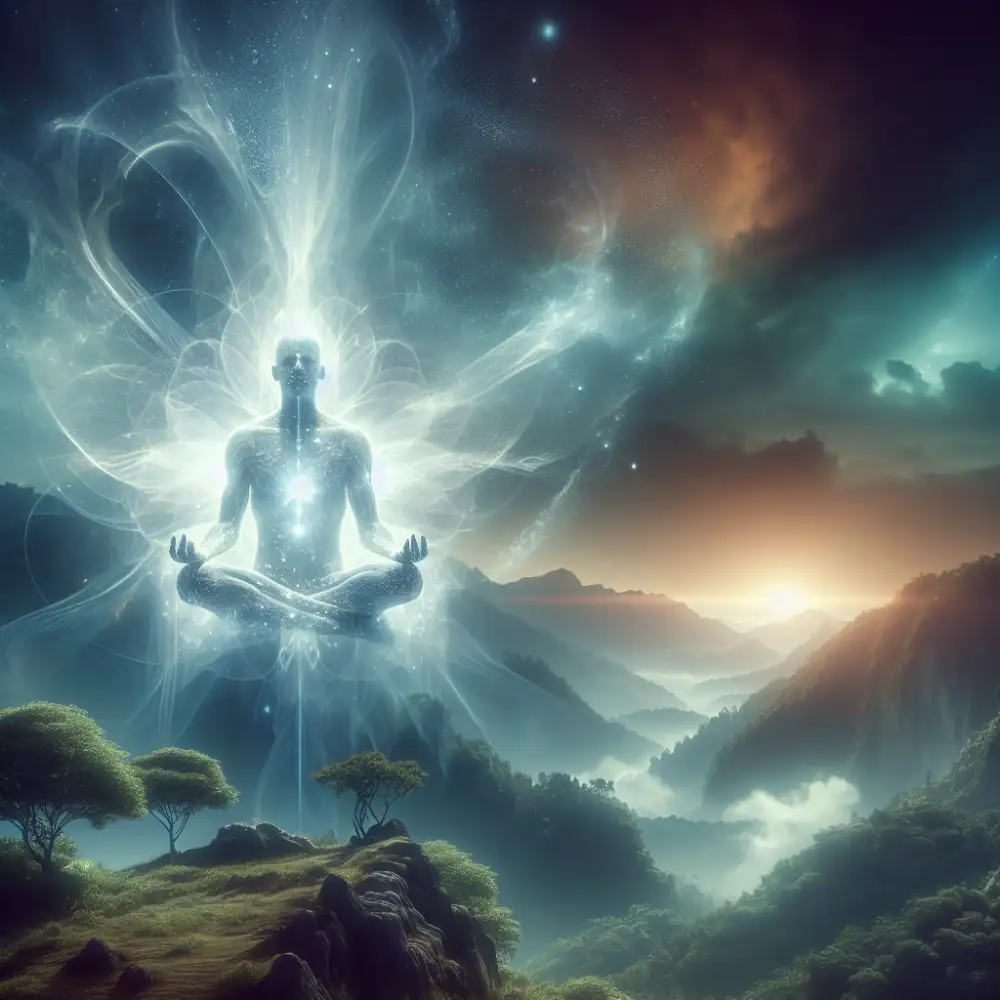
Meditation and Visualization: Visualize yourself embodying the positive qualities of an archetype you want to cultivate. For example, imagine yourself as the Wise Old Woman, full of wisdom and compassion. This can help integrate these qualities into your being.
Creative Expression: Use art, music, writing, or any form of creative expression to connect with archetypes. Allow yourself to be guided by intuition and see what emerges.
Archetypal Analysis: Pay attention to your dreams, myths, and stories that resonate with you. These often carry archetypal imagery and can reveal deeper meanings about your psyche.
Remember, working with archetypes is a process, not a destination. Be patient, be curious, and allow yourself to be transformed by the wisdom they hold.
Archetypes in Dreams and Visions
Spiritual archetypes are universal, recurring patterns of energy and consciousness that exist within the collective unconscious. They represent fundamental human experiences and aspirations, appearing in dreams and visions as symbolic figures, motifs, and scenarios. These archetypes carry profound meaning and offer guidance on our spiritual journeys.
One well-known archetype is the Wise Old Man, often depicted as a bearded figure possessing wisdom and insight. Encountering this archetype in dreams or visions may signify the need for guidance, mentorship, or a deeper understanding of oneself. The Wise Old Man can also represent the individual's own inner wisdom and intuition.
Another significant archetype is the Great Mother, symbolizing nurturing, fertility, and unconditional love. She often appears in dreams and visions as a maternal figure, offering comfort, protection, and spiritual sustenance. The Great Mother represents the feminine principle of creation and the interconnectedness of all beings.
The Hero is an archetype that embodies courage, strength, and the pursuit of a higher purpose. Dreams or visions featuring heroic figures or quests may indicate a call to action, urging individuals to overcome challenges and fulfill their potential. The Hero's journey often involves facing fears, confronting obstacles, and ultimately achieving a sense of accomplishment and self-discovery.
These archetypes are not limited to specific cultures or belief systems but resonate universally across time and traditions. By understanding the symbolism and messages conveyed through these archetypal figures, we can gain valuable insights into our own subconscious minds and spiritual paths. Paying attention to the archetypes that appear in our dreams and visions can provide guidance, support, and a deeper understanding of ourselves and the world around us.
The spiritual archetype, much like the universal symbols it embodies, serves as a powerful reminder of our shared humanity and the interconnectedness of all things. These archetypes and symbols transcend cultural and temporal boundaries, speaking to something deep within the human psyche. They remind us of the cyclical nature of life, the importance of balance, and the potential for transformation that lies dormant within us all. By understanding these universal figures and the profound wisdom they represent, we gain a deeper understanding of ourselves, our place in the cosmos, and the very nature of existence itself. They serve as guideposts on our individual spiritual journeys, urging us to look inward, confront our shadows, and strive for enlightenment. As we continue to explore and learn from these timeless figures, we open ourselves to a richer, more meaningful experience of the world and our place within it.

Published: 28. 06. 2024
Category: spirituality

